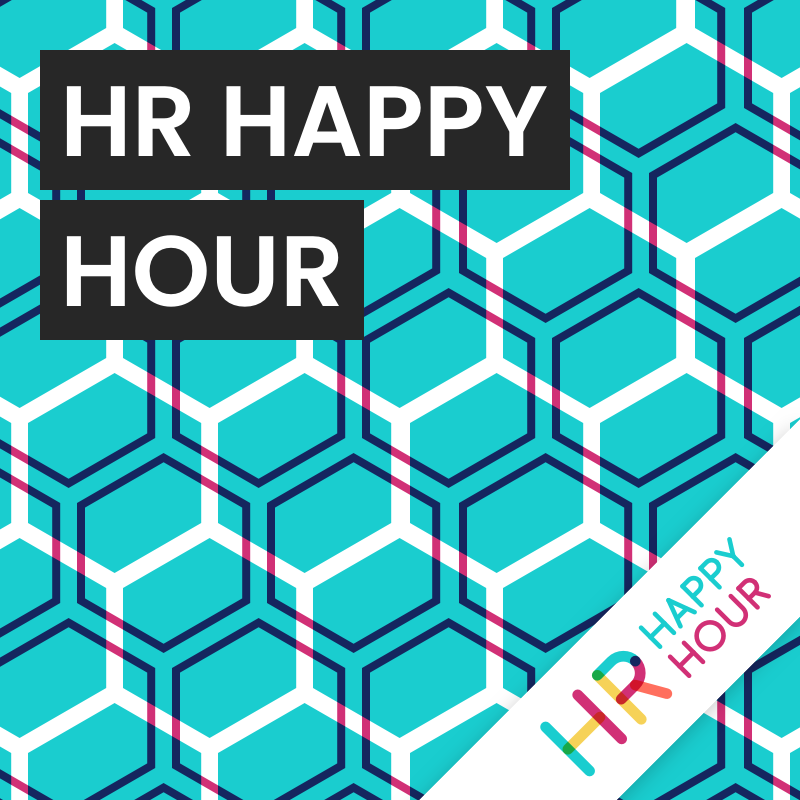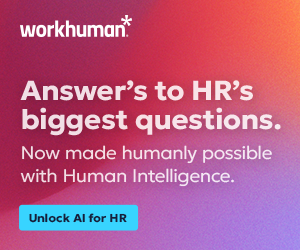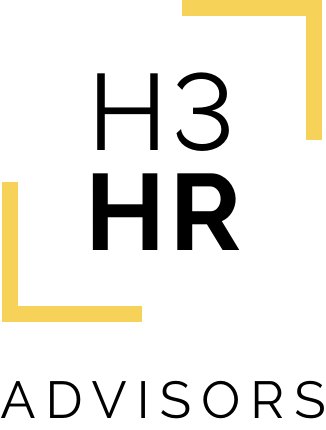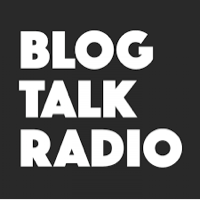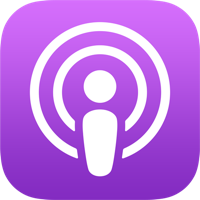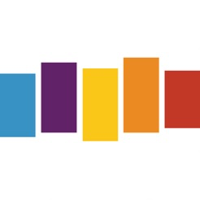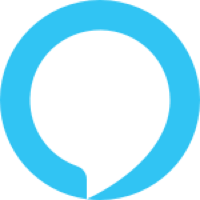HR Happy Hour 480 – Understanding People Analytics Technology
Hosted by

Steve Boese
Co-Founder and Chief Data Officer of H3 HR Advisors and Program Chair, HR Technology Conference

Trish Steed
Co- Founder and Chief Strategy Officer, H3 HR Advisors
About this episode
This week we were joined by Stacia Garr to talk about her latest research on People Analytics Technology, how technology is evolving and improving, and what are some of the things HR and business leaders should look for when assessing People Analytics Technology. Stacia shared how people analytics technology was leveraged in support of organization’s pandemic responses, and how these tools help leaders better understand their people and their challenges. Additionally, Stacia talked about the distinctions between more generalized analytics tools and specific analtyics technologies that are designed to help organizations understand people data and how it changes over time.
This was fun conversation, thanks Stacia for joining us.
Transcription follows:
Steve 0:00
Welcome to the HR happy hour show with Steve and Trish. Trish, you are infamous for getting up and starting to work and not taking a break for any reason. So, here’s my question of the day Trish. What is the very last thing you ate or drank today?
Trish 0:16
I actually just had breakfast here at noon, central time, and I had eggs and toast. I made a proper breakfast today. Oh, yeah. Two eggs over easy and two slices of toast. But that’s almost unheard of. I don’t know, I rarely eat. It’ll be like four in the afternoon and I’ll be like, I probably should eat something. And then I eat like, you know, a Reese’s Peanut Butter egg or something. So, what about you?
Steve 0:43
Well, earlier today, this is, for the first time I’m having a cold brew high brew coffee in a can, called Mexican vanilla flavor, because I felt like I needed more caffeine here for the afternoon session of today. It’s quite nice. I’ve never had this before. It’s quite enjoyable. So, shout out.
Trish 1:02
Wonderful. Well, when we have our guest come on, we’ll have to ask her? We will ask her what the meal of choice was today to prepare for this wonderful interview.
Steve 1:10
Yeah, we’re gonna have a great show. Today we’re going to talk about people analytics technology, specifically, which I don’t think we’ve talked about quite a while on the show. So, it’d be good to get back into that topic. But first, Trish, I think we’ve got to thank our sponsors.
Trish 1:22
We do this episode of HR happy hour is sponsored by Paychex, one of the leading providers of HR, payroll, retirement and Insurance Solutions for businesses of all sizes. With the onset of COVID, Paychex quickly responded to support businesses and helped them manage the new challenges brought on by the pandemic. The Paychex COVID-19 Help Center is the ultimate comprehensive resource hub, featuring articles, videos, scenario tools, live webinars and podcasts that provide valuable and up to the date insights on stimulus measures and managing your remote or hybrid workforce, travel restrictions, state specific guidance and more. And you can find it at pay x dot me slash Help Center. And I’ll tell you, you and I have both used this multiple times since they’ve instituted this. So, I can attest that as a small business owner. It’s helpful. I know it also helps, you know midsize and large companies as well. But I think we even appear on one of the podcast episodes with them, didn’t we? Steve? We did. Yeah. Last summer. So yeah, it’s been fun. And the best part to me is honestly that that state guidance that they keep up to date like to the minutes so really good resource for anyone who does payroll or HR recruiting that sort of things.
Steve 2:39
Yeah absolutely. So, thank you to Paychex. So, Trish, our guest today returning to the HR Happy Hour Show is Stacia,
Trish 2:45
Triumphantly returning…
Steve 2:46
triumphantly returning. She’s the co-founder and principal analyst at RedThread research. Stacey is a researcher and thought leader on talent management leadership DNI people analytics and HR technology. Her work has appeared in fortune, Forbes, The New York Times The Wall Street Journal, and plenty more. She co-founded RedThread research in 2018. After leading talent research for eight years at Bersin by Deloitte. Before Bersin. She conducted research at CB Gartner. And she has an MBA from the University of California, Berkeley and a master’s degree from the London School of Economics. Stasia, welcome back to the show. How are you?
Stacia Garr 3:29
I’m great, Steve. Good to see you. And Trish. It’s been way too long.
Steve 3:35
So, I feel like it’s been about a year or so since you came on the show. Roughly. I didn’t look it up specifically. So, but what a year it’s been if I’m right about that.
Stacia Garr 3:43
Yeah, I think that’s about right. And It sure has been I am I’m excited to be on the hopeful side of things. Now. You know, you think about a year ago and where we were in so much uncertainty. And now we’re, it feels so much more optimistic. So, it’s a good place. We’re in a good place.
Steve 3:59
Yeah, absolutely. optimism is the key. So Stacia, before we get into some of the research and some of the findings. What was your last food or drink today? It’s kind of midday, hopefully you’ve had something
Stacia Garr 4:11
Yeah, I was actually thinking about so um, so I’m one of the lucky few that actually has had my kids in school for a long time. So, but that means that we’re back in the quick drop off turnaround to jump on a call kind of thing. So, I literally just grabbed like a grocery store donut.
Steve 4:28
Oh, I love those.
Stacia Garr 4:32
They are so good. Like, you know, you kind of there’s something to be said for the custom, you know, like Krispy Kreme or whatever. But just that grocery store donut sometimes it hits the spot, and that’s what it did for me today.
Steve 4:43
Sure does. Sure does. All right. Well, maybe we can set up the conversation but maybe give us a little bit of an overview of the research for you and the team at RedThread did in 2020, on people analytics tech, kind of what you were looking to find, and then we’ll dig into some of what you did find.
Stacia Garr 4:59
Yeah, sure. So, we have been looking at people analytics tech, really since we launched RedThread. And so, this was the second iteration of this people analytics tech landscape study, where we were trying to understand, you know, what’s happening in this market, when we started, it was even just definitional. Like, what is a people analytics technology? And who, you know, what are all the animals in the zoo? And how do we categorize them? So that was kind of the 2019 version, and then, you know, 2020, we thought we were just going to refine that, etc., right? And then everything happened. And so what we ended up doing was really trying to understand how all these different technologies were helping HR leaders and people, analytics leaders respond to COVID-19, and then to the social justice movements that we saw across last summer. And so, a lot of what we talked about was one the change from 2019 to 2020. But then also just how the market responded to customer needs and significant changes we saw.
Trish 5:54
Yeah, I’m so glad that you that you’re taking this on. I know, you know, as an analyst, myself, and Steve as well, it’s like we all cover such different areas. So, it’s always fascinating to me to kind of see what other people are really digging into. And did you find from obviously that big change from 19 into 20? Did you find that the people that were using sort of people analytics tools, were really starting to be able to use them differently when it came to things like the pandemic or like the social movements that we were seeing? Or did you find that they really weren’t taking advantage of that?
Stacia Garr 6:28
In general, we saw them taking advantage. And I think what changed was, you know, we’ve been talking about employee engagement experience for a long time. But there’s some data out there from actually right before the pandemic that showed only about a third of companies were properly, you know, surveying or keeping a finger on the pulse. I think there was a survey from Mercer that found that, and but then when we saw with the pandemic, when everybody, you know, not everybody would, but when large portions of population started working from home, it was like the lightbulb went off for CEOs and senior leaders, like, Hey, we actually need to understand what’s happening here. And so what was really interesting was, you know, one, a lot of vendors who maybe weren’t necessarily in the engagement experience, space suddenly became in the engagement experience space, but to the customers came out and said, we need, we need help, and we need it in a meaningful way. And so, we saw a pretty significant uptake, particularly after that first step. So, think like, you know, basically q2 of last year, but as people started getting to the end of q2, and into the summer, they started deploying a lot more of these technologies to understand what was happening. And then in where they can analytics component came in was they were doing it at a much greater level of granularity than we would have seen. And that picked up across the social justice movements, because it became not just we need to know in general, what’s happening with people as they’re working from home, but oh, maybe we should be thinking about what’s happening with our black employees, what should be happening with specific segments of the population as these events are happening? So, we did see a pretty significant uptake in both the technologies but then also how they were being used.
Steve 8:11
Stacey, I think you mentioned, you mentioned, part of what you started to do when you first launched the this research a couple years ago was that was definitional, right, trying to just understand what this is, I think it might be useful for our audience, if you could sort of just tell them or share with them, just what classifies a provider of these technologies as a people analytics provider, as opposed to what I’m thinking. Stacia is a more general analytics provider, which you may be able to use to analyze quote, unquote, people data, and maybe there’s no difference. Maybe I’d love for you to tell me what how you approach those definitions and just defining this market?
Stacia Garr 8:49
Yeah, so the way that we look at a people analytics technology is that it is specifically designed for people analytics for people data, right? So, there are plenty of technologies that have a people data use case. So, think of Tableau or Power BI or the like, but they are not necessarily designed specifically for people data. And part of the reason that that’s an important distinction is the way that people data change means that it’s hard to kind of just think about it in a single tabular format. So, there’s just a lot more changes that happen with our data. And we need to be able to understand how those changes happen over time. So you know, if Trish started out as a senior manager at a company, we want to know, you know, when did she get promoted to a, you know, a director and then to a VP and what were all the things that happened along her journey. And that’s just a different type of data than what gets classified in some of these other systems. And so, we think it’s important to specifically have Focus on people data on not just a people data use case.
Trish 10:04
Yeah, I think that’s really valuable. Thank you for sharing that with the listeners, because I think to a lot of, you know, HR practitioners especially have maybe multiple systems that they’re dealing with that are still maybe not, you know, not integrated with each other. And so, having an understanding, I think of what you either might need, if you don’t have it, in order to be making these sort of assessments and then recommendations. Or maybe you even have something that can handle people analytics, but you’re not taking advantage of it, I think people might fall into those buckets. So, it’s good to have an understanding of how that really differs from just maybe another type of analytics. For me, you know, it’s interesting, as you were kind of talking about things I was thinking about, it almost seems a little bit like maybe the area of people analytics is this is a little bit of a silver lining from the pandemic, and unfortunately, from maybe some of the social and justices that we’ve seen, because a lot of times we don’t start measuring things until there is a problem or a perceived problem, right? What kind of feedback Are you getting from, whether it’s from the vendors and maybe what you’re hearing about their clients? Or maybe just with, you know, HR leaders or other business leaders you’re talking to? How are they feeling about having this information? Maybe that they weren’t tracking before? Because you mentioned that, you know, this was maybe the wake-up call for some of the CEOs to think, oh, we need to get a little more granular. What kind of feedback? Are you hearing from the people now that are actually measuring it? are they finding it challenging? Or enlightening? What are you hearing?
Stacia Garr 11:33
Yeah, I think that for a lot of, because I spend a lot of time talking to people, analytics leaders, in addition to HR leaders. And for a lot of people analytics leaders, it’s been incredibly empowering. Because they know, you know, what gets measured, gets done. And yet, they haven’t necessarily had the same pull from the business to get that data in for it to be something that’s used to make business decisions. So for a large segment of people, analytics leaders who have just kind of been on the, you know, earlier set of maturity, if you will, this has been in, you know, like you said, a silver lining, this has been, this has been a great thing. That said, it is it’s not easy, you know, the people analytics, it’s a newer function in a lot of organizations. And there’s a process of just, you know, you’ve got data everywhere, and how do we bring it together? How do we do that in a way that’s sustainable. So it’s a product, not a project, something that we’re doing on a continuous basis and using it to make decisions, and that we’re doing it in a way that we can have scale, because lots of people like to have their own customized dashboard, or their customized project. And you know, people analytics team is usually reasonably small. And so how do you do that at scale? So, it is both hard, but also, I think, encouraging for people, analytics leaders. And then I think it’s been incredibly enlightening for a lot of HR leaders, because many of them, you know, they don’t know what data they have, and the power that they can harness to make better decisions. And so, having, you know, this combination of a push from the or a pull from the business, and these leaders coming together to share with them new insights that they didn’t know possible is really making HR, it’s giving HR a superpower. And I think that’s a really powerful thing that’s come out of the last year.
Trish 13:23
One quick follow up to that. Just to maybe clarify, you mentioned that they’re definitely organizations that have people analytics leaders, what kind of titles are those leaders kind of embracing at this point? And then I wonder, for companies that maybe don’t have those roles yet? Is that something that you think that they should be having, regardless of what size? They are? So, kind of a two parter question.
Stacia Garr 13:46
Yeah. So I think what we tend to see is when you when you bring in a people analytics leader, who’s going to probably build out your function, they tend to come in and a director level, if you will, so a director of people analytics, maybe a VP of people analytics, depending on their previous experience. And then they will build out the team underneath that to the actual data analysts. So, the people who are managing the details of the data, the people who are consulting with the HR business partner with the business directly. So those will be you know, people analytics consultants, and then then you’ll have kind of others who are doing some more of the tech work and maybe the product design because it really is like designing a product like we think about it as an HR technology product. So those are those are kind of the components that we see underneath that person who gets brought in initially to bring out the team. And do I think that HR leaders should have this or should be looking to bring these people in. Absolutely. Like you can’t run finance without numbers. We shouldn’t be running HR without numbers. Right? We have got we have got to be doing this, it is one of the hottest jobs in HR, like trying to find a people analyst, people analytics analyst, or somebody to lead one of these groups. And at the moment, it’s a pretty tight community. And so, it’s sometimes hard to find to bring people over. But there’s a lot of people coming out of school who are really interested in this space. So, you know, it’s just a matter of kind of opening your eyes and thinking about people’s experience maybe a little bit differently and how they can build these. These functions.
Steve 15:20
Yeah, great. One of the things on the cover in the research is the actual market itself, the provider market itself, I wonder if you could just give us a little quick overview of for, again, for folks who may not be as familiar, right, because everybody’s familiar with the HR is systems, right? We all know, the applicant tracking systems around forever, I get the feeling or the impression that the average person or the average listener, or someone may be just beginning to explore, some of these technologies may not be as familiar with this particular subset of the HR tech market. So, I wonder if you could just share just some overview, how about how many vendors are there about how big it is the maturity level of some of them, etc.? Just some thoughts on the market itself?
Stacia Garr 16:07
Yeah, so in terms of the size of the market, for this study, we identified 121 vendors within the market. And that is not comprehensive like that, we published that in December have probably already added another 10 or 15, in the first three months of 2021. So, it’s big. In 2018, we, when we first started this research, we identified 89 vendors, so you can kind of see that it’s been pretty significant growth. In terms of the market size, we estimated it. And this is based on the revenue numbers that we collected from the vendors, we estimate the overall market size of 2 billion and a 55% kegger. So, compound annual growth rate for the last four years. And then if we just look at the last year 2019 to 2020, we saw 35%. revenue growth.
Steve 16:58
Yeah, that’s huge. I, you know, I follow the space fairly closely, too, right? For what I do. And I wouldn’t have guessed there were that many. Because I mean, I mean, I think it could be only the last few, Stacia, is it like some other elements of the HR tech market work for a little bit dominated by eight or 10, bigger players? And then there’s lots of folks playing around the edges of it.
Stacia Garr 17:20
So, I don’t think it’s there yet, because I don’t think it’s matured to that point. So, we think about, there’s basically I think, in the report, we say there are eight different categories. And so, in many of those categories, focus on a certain thing. So, employee engagement vendors, employee experience vendors, right, um, workforce, strategic workforce planning vendors, are some of them. But then there’s also this group that we call multi source analysis platforms. And that’s a bit of a mouthful, I could probably use a marketer to help me better name. Um, but they’re folks that aggregate data that bring in data, they are not themselves, producing data. So, data integrators, so that would be like a Vizier, or a Splash BI, or cruncher, which is in, in Europe. So, but to answer your point, in each of those categories, there’s a few dominant kind of dominant players, and then quite a few startups, we got a lot of young companies in this space. So, you see that, yes, in those multi source analysis platforms, you definitely see it in engagement. But if you go and you look at organizational network analysis, which is technology that allows you to see how people kind of interact in the strength of their connections, that is pretty wide open. There’s a lot of smaller vendors, some of them really good, but there isn’t a dominant player.
Steve 18:39
Yeah. Great. Thank you, Stacia. I mean, I think when it’s a complex market, and a diverse market and a growing market, right, that presents challenges, for HR, HR, it whatever the title is, new directors, with people analytics, say, to really figure out what’s the right solution or set of solutions for their organization? What are some of the recommendations that you may give, for someone in that position, whether they’re really, really early, like just beginning the research process, which I tell them to read your report? Probably that’s probably step one, but like to just really try to What am I thinking about what’s important to an organization when they’re evaluating technologies, and then selecting technologies that they may implement for this function?
Stacia Garr 19:32
Yeah, I think the first thing and we say this, I think all of us probably say this for anybody implementing new tech, but it’s, you know, figure out what are the challenges you’re actually trying to solve? And because there’s so much cool stuff, so much flashy stuff, right? And so, it’s easy to just kind of gravitate towards that you notice that have AI doesn’t have this doesn’t have that. But we spend a lot of time saying okay, what is the challenge you’re trying to solve overall? And what’s your specific context for your for your business? So, for some of them, particularly because some of these new technologies You can feel on the edge of what we may be comfortable with from an ethical or a data privacy or security perspective. So, it’s important to think about what’s your organization’s culture around that? How open are you to experimenting with some of these new technologies as you tried to solve this problem? So, what’s the context that your own organization is operating in, particularly from a data privacy security ethics component? So that that’s one thing we talked about the challenges in the context? Second is support and services? How much do you need, you know, you, you mentioned, some companies are just starting to build up their team. So, they are likely going to need to rely on their vendors quite a bit more for support. And we found about 60% of vendors are will charge for that additional support, but 40% rolling into implementation with the expectation that, that people will be able to operate on their own. So where do you fit? And does the vendor offer what you need. And then the third point is kind of gets back to my first one a little bit, but it’s around ethics. So, there’s very different perspectives on the ethical aspects of this data and how it should be used, how it should be shared. And vendors themselves have very different perspectives. And so, you want to make sure that there’s an alignment on that point, or at least that you’re clear, as a buyer, this is what we’re okay with. This is what we’re not okay with making sure that gets built in.
Trish 21:16
Yeah, I’m really glad that you mentioned some of those things in terms of the partnership, because I think that’s something to, like you said, we find, find really flashy things that are very interesting. But it doesn’t really align with who we are as a company. And so that’s always important. I think the other thing too, just to add on there is just to make sure you know, about the technologies you’re already using. And do they already have some of those capabilities, too. I’ve been in companies where we found that, you know, we go out and try and buy something, and it’s like, oh, we actually already kind of had it. And we just didn’t know about it, maybe because it’s a predecessor of yours, or another department has bought something that that will work well. So that’s always a good starting point too.
Stacia Garr 21:47
Yeah, we’ve been talking about that actually quite a bit with the diversity, equity, inclusion, belonging tech, that we’re the study that we’re doing there, because we’ve seen is, as impressive as the growth has been with people analytics tech, we’ve seen even more growth with the DEIB tech. And a lot of that has meant that vendors have added features that enable folks to do particular types of analysis or to focus in specific ways related to DNI and, and so we’re spending a lot of time telling people look at what you have. And I think that’s definitely the case, too, because we’re seeing much more robust capabilities, or more embedded analytics and some of the existing tech that people have. So, I think it’s a, it’s a great piece of advice Trish to look at what you have first.
Steve 22:28
Yeah, cause that actually, that’s similar to what I was thinking stage as well, like, especially at a larger enterprise, who may be using one of the big kind of global foundational, HRIS type systems, right, which we all know their names, right, who all have their own forms of analytics slash reporting and dashboards and decision support tools embedded throughout them at various levels. I imagine there’s always conversations that happen at these larger enterprises, right? It’s internal right to say, Well, why do we need another tool for x when we have y kind of thing? And there’s trade-offs? And I suppose, based on some of your early comments station, that there are some very specific things that these people, analytics providers, at least the good ones can provide that go above and beyond kind of the I don’t know, the standard analytics tools that sort of come prepackaged with these big enterprise solutions?
Stacia Garr 23:22
Yeah, definitely. And I think a lot of it gets into the specific capabilities of those tools from an analytical perspective. So you know, just giving you a dashboard that tells you current state doesn’t give you any sort of predictive insight into if we continue as we are, what’s going to happen, or you know, different scenarios that you might want to look at, you know, if we increase our investment in this area of the business, etc. And so, you know, if that’s important to you, and I think it’s important, it should be important to you, you know, you may want to look at some of these, these other technologies. The other thing that’s really shifted to is the users of these tech, because in we’ve seen that a lot with a pandemic, but it used to be like a people analytics person, people geek, if you will, you know, going and crunching the numbers and doing it. But that is not the case anymore. This information is increasingly being democratized. So, you need to have a solution that will make it easily accessible and understandable to Yes, your HR business partner, but to your business leader, to your managers, increasingly to employees. And some of these technologies. They were built with HR in mind, which is great, but they don’t democratize very well. Yeah.
Trish 24:35
I’m glad you mentioned that, because that was going to be part of my next question around. I know, one of the key findings was that some of these solutions or many of the solutions are not as user friendly, as maybe the vendors think they are. What kind of advice Are you giving either to the vendors on the side of what they need to be thinking about to make them more useful? friendly and usable? Or on the flip side to someone who’s buying these technologies? Like what? I don’t know, are there any cautionary things to look for or kind of be aware of as you’re looking at usability?
Stacia Garr 25:07
Yeah. So, for the vendors, we’re spending a lot of time talking to them about being very clear on the user personas. So the interesting, that’s the thing that’s interesting is that a lot of these technologies, as I said, started out being targeted the people analytics leader, and then there was almost an assumption, I don’t know that it was explicit, but an assumption that, okay, we’ll just say, make the same stuff available to HR, or we’ll just peel back a few things, and we’ll make it available to the business, right. But that’s not how those folks use the data they use, they have just a fundamentally different process of accessing the data and the decisions that they’re trying to make. And therefore, they really need from just a product design perspective, a specific use case for them. And, and so in a specific persona. And so, we were advising a lot of the vendors to go back and rethink what their personas are and how they expect people to actually use these, these data. On the on the buyer side, we basically do the same thing. We say, okay, who are your Who are your buyers, or who your user is going to be? And how do you expect them to use the technology? And does the technology actually, is it intuitive for those users? Because we all know, if it’s not intuitive, if you can’t make the decisions and understand quickly, you’re just going to go do something else. So, we’re really kind of pushing them to understand how the tech is going to be used and what we expect people to deal with it.
Steve 26:31
Yeah, awesome. Stacia, that’s great. Last thing for me is anything kind of bubbling up, either that you saw on the research from 2020. Or maybe you’ve picked up in the first quarter or so of 2021 that’s either emerging or getting more important. Or maybe it’s brand new like that you’re seeing in this space that he which is what’s interesting to you right now in this space.
Stacia Garr 26:50
Yeah, so one of the things we’ve kind of identified with red thread, three mega trends that we’re seeing happening this year. One is analytics broadly. And second one is diversity, equity, inclusion, belonging. And then the third is skills. And so the thing we didn’t get to with this research, we kind of saw it, but we’re unable to get to it is a real focus on skills technologies, and what we should be doing with them, because skills on their own are kind of interesting, but not that interesting. The when you start to connect them to other things like your forest plan, or your needs for training and development, like that’s when the concept of skills gets more interesting. And so, we’re looking at creating a report that looks at all the different vendors and kind of the different areas of HR. And in pulling together, how should you think about skill stack and the analytical capabilities underneath that? So, we actually I think I told you all before we launched our own podcast, and Season One is called the skills obsession, because that is like, for us so important. And so, it’s part of our research journey to understand what’s happening with skills and analytics underneath it.
Steve 27:57
Yeah, that’s pretty cool. That’s like, a large part of the conversation. We just had our last show with Ravin Jesuthasan. Right. And this, this was like, you know, the future of work kind of stuff that Ravin does, and at Mercer and with the World Economic Forum, but a large part of that was dissecting and breaking down jobs and job holders into more discrete objects, which could be referred to as skill certainly, I’m not sure Ravin called it that, it may be dead. But we were just talking about them.
Stacia Garr 28:26
Yeah, no, exactly. For instance, I was just speaking with a vendor who has workforce planning solution. And right now they’re still doing workforce planning by role or title, you know, you need a product manager, he knew this, you knew that. But I don’t think that’s going to be how we’re talking about this in five years, we’re going to be talking about, okay, we need somebody who can do user experience for, you know, whatever, 30% of the project, and we need them at 50%. Time for that. Like, I think we’re just going to aggregate things down into smaller pieces. And the question is, is, where’s the line between smaller pieces that are useful in smaller pieces? That’s minutiae in too much detail? And I think that’s something we had to figure out.
Trish 29:01
Yeah. And I’ll tell you, I think just from having lived it, in HR, we wanted this years ago, I mean, I go all the way back to time at PwC, or my job after that, where I was the director of HR for a PR firm, and then we would look at a specific skill, like for a project, it wasn’t so much about roles, and we had literally no way to find it our way to find a skill. I’m talking about, like in a global organization, we would actually send emails around to each office saying, hey, do you have someone who speaks Portuguese and also can, you know, as a Java developer or whatever. And so that’s what’s exciting to me is that some of these things that HR leaders have needed for forever, are really able to be put into play now. So that’s what I think is so exciting and seeing it come to fruition Finally, yeah. Yeah. So, I’m excited. I hope they do get rid of some of the job, sort of job descriptions or roles in the in the format that they were in and really Focus on what people are needed to do in the in the jobs that are right in front of them. So yeah, definitely good stuff.
Steve 30:05
Great stuff Stacia. This has been super fun. Great to check in. Yeah, it’s been, like I said, I think it’s been about a year since we had you on the show. So, I love to catch up with some of our friends and get caught up on what they’re doing what’s happening in the space for folks who want to learn more about red thread research. And this study in particular will send them to RedThreadResearch.com. Right. And also, to find Stacia on LinkedIn, Twitter, wherever else send her a letter, you know, in the
Trish 30:33
smoke signals…carrier pigeons
Steve 30:36
the grocery store and the donut line.
Stacia Garr 30:38
That’s right.
Steve 30:42
And I know Stacia I don’t know what’s going to happen between now and then. But I know I’ll see you at HR tech. We’ve been talking about that. And so, you’ll be one you’ll be you’ll be there, and we’ll all be there. It’s going to be super fun back in person in September. So, we’re looking forward to that too.
Stacia Garr 30:55
So am I. thank you both so much for having me.
Steve 30:57
Awesome. Great, great stuff. Good to see you. So Alright, Trish fun. Love it.
Trish 31:02
I know I love this stuff. You know me because this is like the, again, all the things that I wasn’t able to do very well when I was actually doing HR. It’s like now it’s hearing about them. It’s very exciting. So absolutely. So, thank you again Stacia. Thank you
Steve 31:11
Trish thanks to our friends at Paychex of course Paychexs.com for all the good stuff there. I wear my paychecks out almost every day because they’re so cool. So, thank you everybody for listening. We remember to subscribe wherever your podcasts. We will see you next time and bye for now.
Talk to us
If you want to know more about any aspect of HR Happy Hour Media Network, or if you want to find out more about a show topic, then get in touch.

